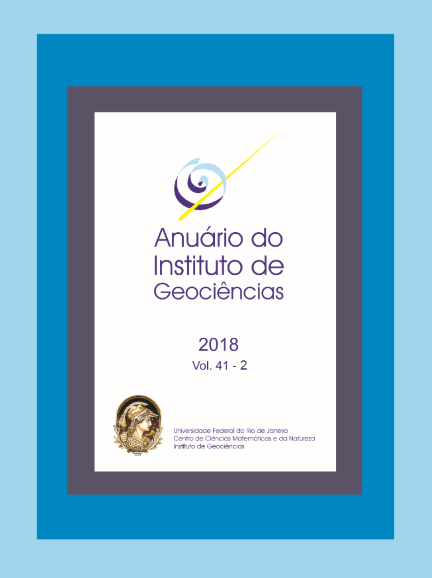(U-Th)/He Ages from the Fluorite Mineralization of the Tanguá Alkaline Intrusion
DOI:
https://doi.org/10.11137/2018_2_14_21Keywords:
Tanguá Alkaline Intrusion, Fluorite mineralization, (U-Th)/He Ages, Mesozoic to Cenozoic magmatismAbstract
The Tanguá Alkaline Suite formed as a result of Mesozoic to Cenozoic magmatic events that affected the part of the South American Platform in Brazil’s southeast. The alkaline intrusion is composed of alkali-feldspar syenite with nepheline (pulaskites and umptekites), syenite (with or without the presence of pseudo-leucite), varied nepheline syenites (foyaites, micro-foyaites etc.) and alkaline magmatic breccias. The intrusion contains important fluorite mineralization, in the form of NE-SW oriented veins, which were economically extracted in recent decades at the Emitang Mine. This paper focuses on the analysis of these centimetric crystals of fluorite which vary in color from (yellow, to white and purple.) associated with mineralization of Tanguá Body. Geochronological dating by (U-Th)/He of fluorite mineralization showed a wide range of ages, with the oldest age of 74 ± 3 Ma (Late Cretaceous) and the youngest of 0.11 ± 0.02 Ma (Late Pleistocene). Most ages are concentrated between 25 and 8 Ma (Miocene). The oldest age (74.0 ± 3 Ma) is associated with hydrothermal fluids percolating at the time of intrusion of the Tanguá Body. The other ages represent episodes of percolation of hydrothermal fluids and consequent growth of fluorite crystals. Of note is a set of Miocene ages that can be associated with regional tectonic events. This phase of flurite growth may be associated with the reactivation of basement faults and structures in the Tanguá region and the circulation of hydrothermal fluids associated with intrusion of younger dikes. The youngest ages may be associated with neotectonic reactivation of faults during neotectonic events.Downloads
Published
2019-09-09
Issue
Section
Article
License
This journal is licensed under a Creative Commons — Attribution 4.0 International — CC BY 4.0, which permits use, distribution and reproduction in any medium, provided the original work is properly cited.
















 Except where otherwise noted, content on this site is licensed under a license
Except where otherwise noted, content on this site is licensed under a license 